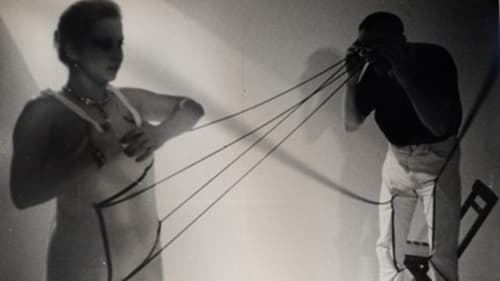Anthony Moore
Birth : 1948-08-13, London, United Kingdom

Supervising Sound Editor
Candice longs to escape the boredom of her seaside town, but when a boy she dreams about turns up in real life, she becomes involved with a dangerous local gang.

Self
In conversations with his friends and colleagues, among them Bernd Upnmoor, Helmut Herbst, Alexander Kluge, Klaus Wyborny, Daniel Kothenschulte and Helge Schneider, Ulrike Pfeiffer takes us on a journey into the broad expanse of Nekes' cabinet of wonder and his cinematic works. At the same time, this documentary provides an insight into the history of experimental film in Germany.

Original Music Composer
The painter gazes at his female model, or how voyeurism is transformed into culture. An erotic adventure film where the theme is the viewer himself.

Music
Director Werner Nekes has created this experimental film in the mode of James Joyce's Ulysses to the extent that human interactions are represented by poetic, symbolic images and language, with a certain amount of nudity added in. ~ Eleanor Mannikka, Rovi

Sound
Makimono is an Asian roll painting depicting a landscape. The subject of the film is the language of film itself, its mutability and its influence on the viewer's vision and thinking. While the film gradually progresses the viewer is gently invited to reflect on the development of the film in its expressive potential.

Music
An experimental film where a particular space is constantly "present" : there is a complex usage of superim- position, and of split-screen effects. The place shown is a part of a house in the country. Doors and windows are continually shown, emphasizing the film's concern with framing. Other images are present: city-scapes of a particularly sinister nature, implying a sense of ruin, and shots of a chorus on a stage. These shots begin and end the film which is accompanied by a vocal chant on the soundtrack.

Sound
Diwan, a lyric anthology, an outdoor movie with people. With people living in the surrounding precious and very beautifully photographed nature, are neither more nor less than one part of it. What Nekes manages there with landscape, as a cunning and quote many fine artist in a medium that runs in time, as he defeated the time changed, by themselves for change of scenery uses, as it interferes with the laws of chronology through the rewind ability of the camera or destroyed, which is a compelling and highly aesthetic experimental company.

Music
Diwan, a lyric anthology, an outdoor movie with people. With people living in the surrounding precious and very beautifully photographed nature, are neither more nor less than one part of it. What Nekes manages there with landscape, as a cunning and quote many fine artist in a medium that runs in time, as he defeated the time changed, by themselves for change of scenery uses, as it interferes with the laws of chronology through the rewind ability of the camera or destroyed, which is a compelling and highly aesthetic experimental company.

Music
The film is divided into five parts differing in pictorial and musical structure. The plot, two women and their love for one another, is of secondary importance. An ingenious combination of stereoscopic images and montage of individual pictures make new qualities of perception accessible to the viewer. In the final part of the love scenes pictorial sequences and music build up to a delirious rhythm.

Sound
SPACECUT makes the frame a very strong culminating structure. Every frame is different, yet the almost half hour assembly of images results in a picture of one place being filmed. SPACECUT has two sections, the second being the frame composite, whereas the first consists of long takes. Within the swirling, fleeting frames the eye receives picture after picture like an enormous, exciting puzzle. Strangely enough, it receives it only by absorption - of the sky, trees, valley, rocks, shadows. The automatic retention of these flashes gives you a sense of being in this bowl of land made by the golddiggers in 1871. You might think that this use of single frames would hurt the eye, but in fact it does not. Rather the experience is one of total relaxation. (Stephen Dwoskin)

Music
30 minutes of images with music by Anthony Moore

Music
"...Nekes retreats behind his film. What is left is a double portrait, in which neither Dore 0. nor the grand landscape remain unchanged. The cold of the icy coastline - long shots of stones, snow and the sea - dwindles away before the image of Dore 0. Solitude is superflous, when the grandiose mountain meadow invites somersaults. ... In this case Nekes handles what he shows considerately. He releases the objects he portrays. He allows them to unfold. And so model and patterns actually serve another purpose: to let poetry grow, and energy and beauty and confidence nell'abbandono." (Dietrich Kuhlbrodt, Filmkritik, 9/1971).

Music
From one flick of the mare’s tail came an unending stream of images out of which was crystallised the milky way.

Music
According to the director, "Memory is a cruel hope without awakening."










